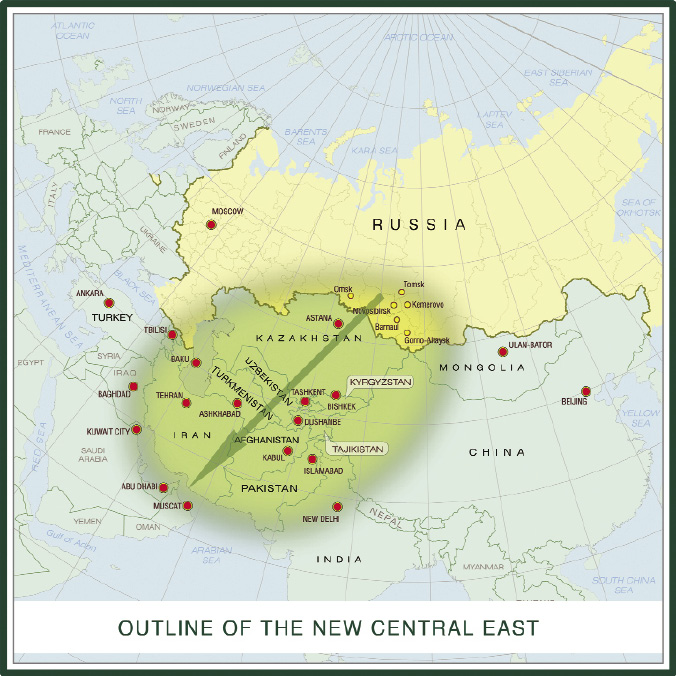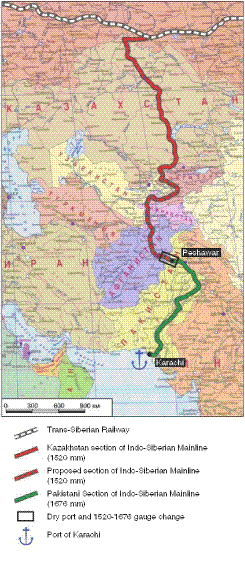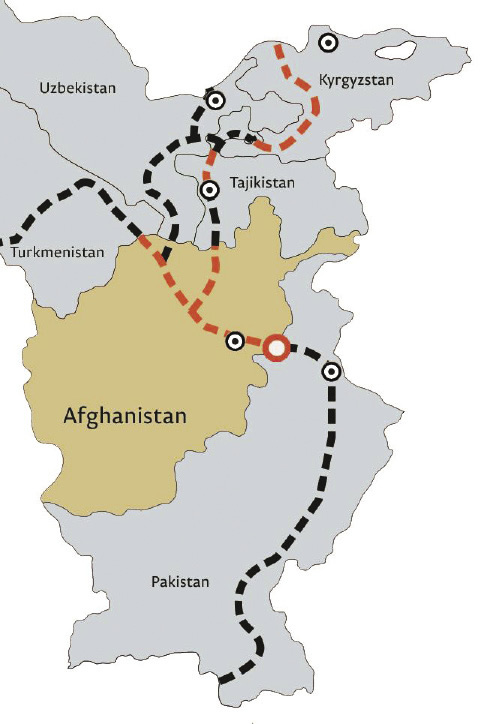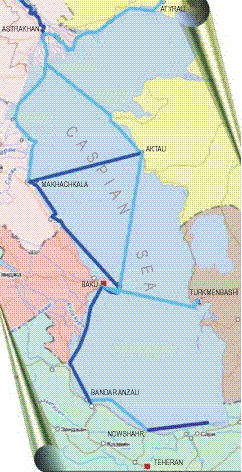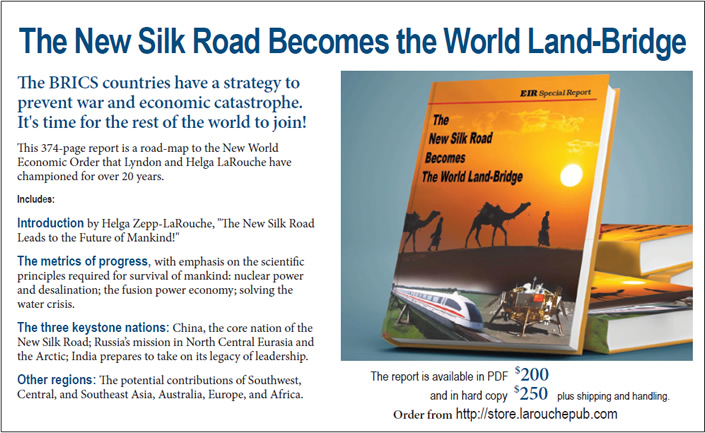A Russian Vision
The Industrial Development of
Afghanistan and Central Asia
March 2015
This article appears in the March 13, 2015 issue of Executive Intelligence Review and is reprinted with permission.
FIGURE 1
The New Central East, from the Science Cities of Siberia to the Persian Gulf
|
Reports published by the Institute for Demography, Migration, and Regional Development (IDMRD), a Moscow non-governmental organization (NGO), represent what Russia was bringing to the table at the June 2014 Group of Eight (G8) summit in Sochi, Russia. President Vladimir Putin’s longtime colleague, Federal Drug Control Service (FDCS) head Victor Ivanov, had announced a campaign to eliminate the “planetary narcotics production center” in Afghanistan, as a focus of Russia’s G8 chairmanship.1 But the summit was cancelled, when the G8 expelled Russia over the Ukraine crisis.
The first and third of the reports excerpted here were published in Russian, and the second one in Russian and English. Italicized notes have been supplied by EIR. Graphics are those of IDMRD unless otherwise noted.
How Southwestern Siberia Will Become an Economic Center of the Planet
This 2012 report proposes that the industrial and science cities of Siberia be revived to power the development of Central Asia and Afghanistan. The report is relevant for all once-industrialized countries, such as the United States, European nations, and Australia, which are threatened with becoming unproductive, post-industrial wastelands. The excerpts were translated by EIR.
The New Central East
Western Siberia has a special opportunity, linked with a promising macroregion now taking shape: the New Central East or Central Eurasia, including the classic [in Russian terminology] Middle East (Iran, Afghanistan, Iraq, and Pakistan), Central Asia, and western Siberia itself (Figure 1).
If Russia pursues the right strategy, this macroregion will become a new market, with nearly 400 million inhabitants, by 2025. Siberia’s unique role can be to organize a planetary center of third-stage industrialization, which would not only pioneer this type of industrialization within Russia, but also serve as an organizing capability for the primary industrialization of Afghanistan and the second-stage industrialization of former Soviet Central Asia, as well as Iran and Pakistan, which will all become priority markets for Russian capital goods and advanced technology exports.
Russia’s Caspian Sea port of Astrakhan will play an important role in organizing the New Central East.
Third-Generation Industrialization vs. ‘Assembly’ Industrialization
A new industrialization is an imperative not only for Russia, but for all mankind, both the least developed countries of the “third” and “fourth” worlds, and the leading world economic power, the USA, whose government debt is $17 trillion greater than its GDP.
Extremely dangerous for Russia, however, is the current tendency at all levels of government, to reduce our own new industrialization to a semi-colonial model of “assembly” or semi-knock-down industrialization, under which strategic planning and advanced technology development take place outside of Russia, while our country is flooded with parts and trimmings of industrial machinery from elsewhere, to be assembled. The mission of the southern part of western Siberia should be to prevent this substitution, while creating in Russia a leading planetary center of industrialization and production of public wealth.
FIGURE 2
A ‘Waterfall’ of Industrialization 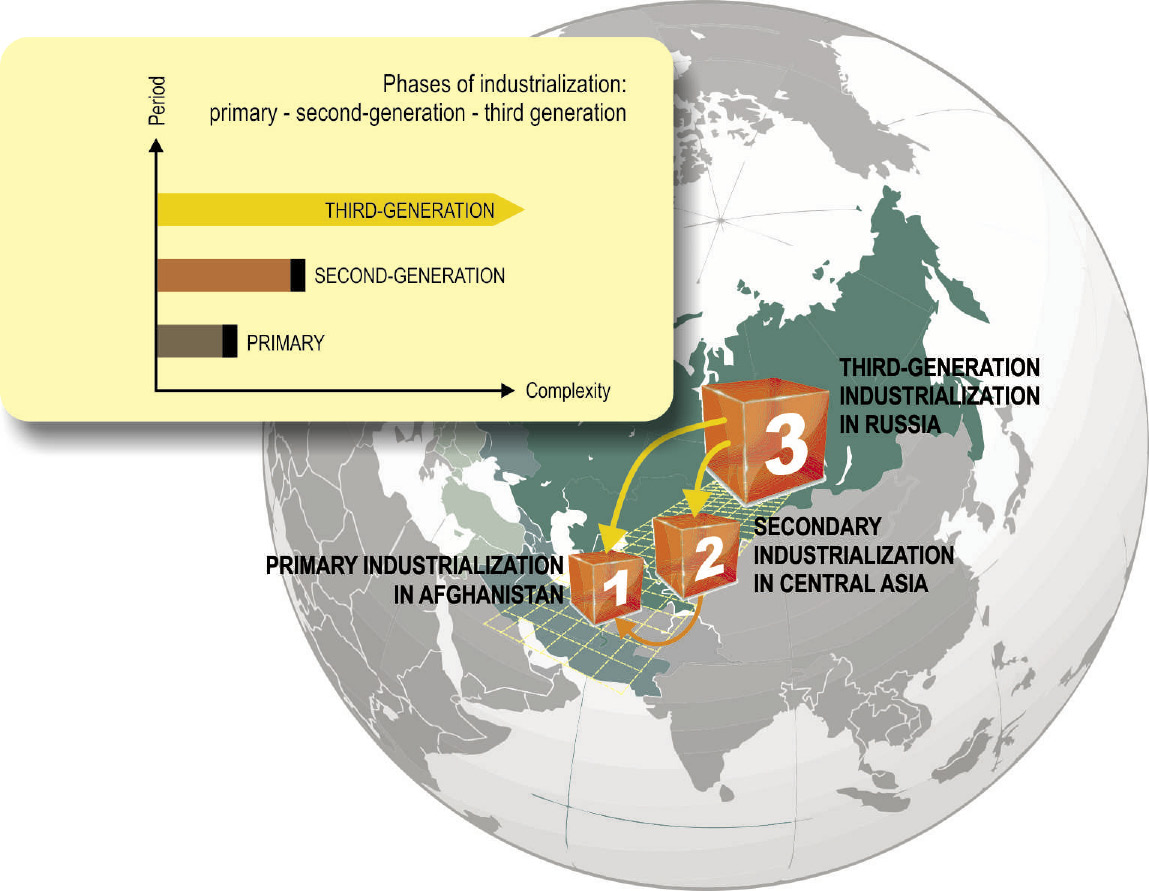 View full size With modernization of their productive capacities, the science and industry cities of western and central Siberia could export capital goods for the second-stage industrialization of the Central Asian countries and the primary industrialization of Afghanistan. |
The formation of a planetary center of vanguard third-generation industrialization will make it possible to organize a cascade of industrializations: from third-stage down to primary (Figure�2). The basis of the tertiary industrialization will be robotization of production on a large scale, advanced machine-building, and third-generation infrastructure, especially transport and multimodal systems.
Creating a planetary center of new industrialization in this region is the only feasible way to destroy the planetary center of narcotics production in Afghanistan, which kills 100,000 people annually, at least 50,000 of them young people in Russia.
A New Generation of Alternative Development Programs for the Elimination of Drug Production in Afghanistan
This report was prepared for a Spring 2014 G8 pre-meeting, by IDMRD and the Belarus-based Center for Strategic and Foreign Policy Studies. Yuri Krupnov, Supervisory Board chairman of IDMRD, presented it at that March 25 Moscow session, which Russian FDCS head Victor Ivanov chaired.2 The full report is available in English at www.idmrr.ru.
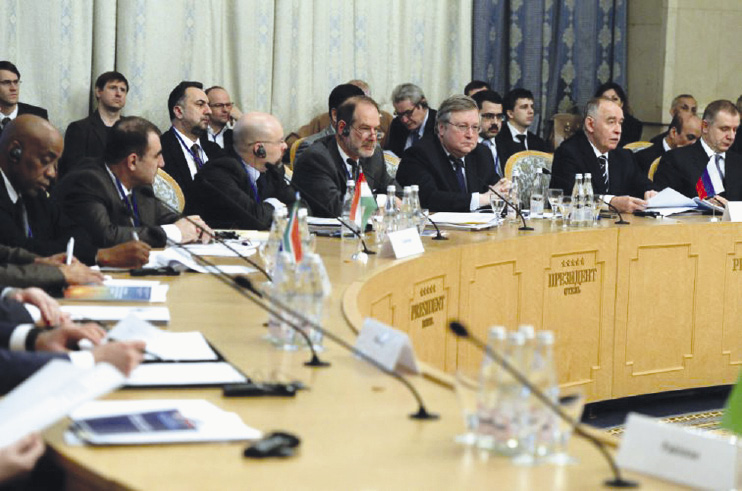
FDCS
This Moscow meeting on Alternative Development for Drug-Producing Regions, held March 25 in preparation for the subsequently cancelled 2014 Group of Eight summit, was attended by over 100 experts from 27 countries. Chairing was Russian Federal Drug Control Service Director Victor Ivanov (second from right at table). Yuri Krupnov (third from right at table), chairman of the Supervisory Council of the Institute for Demography, Migration and Regional Development, presented the institute’s report on alternative development in Afghanistan. |
Alternative Development Is Development
In the concept of “alternative development,” the core concept is “development.” “Alternative development” is about organizing accelerated development that can effectively and sustainably replace the drug industry and disrupt its social basis.
In international law, “alternative development” is directed at the implementation, in an unfavorable environment shaped by drug production in a country or region, of the fundamental human right to development. This right, as stipulated in the Declaration on Social Progress and Development (1969) and Declaration on the Right to Development (1986), is an inalienable human right.
International aid for alternative development should be a special instance of a mutual development policy. The concept of mutual development (co-development), elaborated by IDMRD, proposes that international cooperation will be most effective, when aimed at creating new social wealth and value, rather than merely redistributing existing assets. Such an approach turns the fight against drug production in Afghanistan into a win-win game for all participants—from the international community, to the farmers of Helmand, Nangarhar, Kunduz, and Badakhshan Provinces.
A Russian Plan for Crash Industrialization:
A New Method of Alternative Development
Afghanistan lacks development in any form, of which alternative development could be a part.
The IMDRD offers a vision of alternative development in Afghanistan, based on crash industrialization and basic economic infrastructure development, under a Comprehensive International Plan for Alternative Development in Afghanistan. Crash industrialization should be considered a new method of alternative development, involving urban as well as rural areas. Though urban areas have never been high on the alternative development agenda, it is obvious that an economic boom in the cities, coupled with a comprehensive urban planning policy, is crucial for the success of alternative development in Afghanistan. Industrialization will inevitably be accompanied by urbanization, which needs to be balanced and economically sound.
Russia has unique, and generally positive, experience in organizing the industrialization and uplifting of the Afghan economy, dating from cooperation between the USSR and Afghanistan in the 1970s and 1980s.3 Soviet investments helped build 142 major infrastructure and industrial assets, which became the basis of the national economy. This continued even during the war there against an internationally backed insurgency. If the international community were united in providing security, stability, and economic prosperity in �Afghanistan, such efforts could be many times more effective today. They represent the only viable strategy for fighting drugs there: ensuring security through development.
A Comprehensive International Plan for Alternative Development, with a crash industrialization program at its core, would allow implementation of the policy of a transformation toward self-reliance, adopted at the [July 2012] Tokyo Conference on Afghanistan. Such a Plan could become a key instrument in concentrating international efforts and achieving substantial improvement of the situation in Afghanistan within a feasible time frame.
A Comprehensive International Plan for Alternative Development in Afghanistan
A Comprehensive International Plan for Alternative Development in Afghanistan, based on a crash industrialization program, will focus on four areas:
1. Basic infrastructure, both for the general welfare and for economic programs to create a large number of new and steady jobs.
2. Building new and expanding existing industries, to provide mass employment and raise the income level of a substantial part of the population.
3. Enhanced access to social and cultural infrastructure, especially education and health care, and development of a skilled work force for the new Afghanistan economy through professional and vocational education, including training Afghan youth abroad, as well as new educational institutions within the country.
4. A security policy based on national reconciliation and an uncompromising fight against drug production and trafficking, corruption, and extremism.
Implementation of the Plan, and related economic projects in neighboring countries, will help to create a common market with more than 300 million consumers, in Afghanistan, Pakistan, Iran, Tajikistan, Kyrgyzstan, Uzbekistan, and Turkmenistan.
The following vision of projects and programs constitutes a part of the Plan that could be implemented with organizational help from the Russian Federation.
Infrastructure for Development
A top priority for the Afghanistan economy is the development of electric power, to drive industrial development and drastically alter the quality of life for people in Afghanistan. A major strategic investment project in this field, capable of providing enough energy to carry out primary industrialization of the country, is the construction of a chain of hydroelectric power plants (HPP) on the Panj River, which forms the border between Afghanistan and Tajikistan. This project calls for building 12 dams, with a total of up to 17.5 GW of installed generating capacity. The first stage of the project would be construction of the Dashtijum HPP and Rushan HPP, providing up to 7 GW of installed generating capacity.4
FIGURE 3
Concept of an Indo-Siberian North-South Railway and Development Corridor
|
The Indo-Siberian Railway is a proposed north-south development corridor, running south from Omsk, Russia, on the Trans-Siberian Railway, through Kazakhstan, Kyrgyzstan, Tajikistan, Afghanistan, and Pakistan to the port of Karachi on the Arabian Sea. At an inland terminal (“dry port”) in Peshawar, Pakistan, there will be a gauge change from the Russian broad-gauge rails (1520 mm) to the even wider “Indian gauge” (1676 mm) used in Pakistan. The route intersects or parallels planned Chinese Silk Road Economic Belt railroads in both Central Asia and Pakistan. |
FIGURE 4
Railways for Afghanistan’s Development: A Russian Proposal
Details of existing (black) and proposed (orange) railroads for the Central Asia – Afghanistan – Pakistan sections of the Indo-Siberian north-south corridor. |
FIGURE 5
Afghanistan: Resources and Future Rail
|
If this power is divided equally between Afghanistan and Tajikistan, even the first-stage capacities will cover all the energy needs claimed by the Ministry of Energy and Water of Afghanistan until 2020. This will make it possible to launch primary industrialization. At the same time, the creation of water reservoirs as an HPP by-product will provide water resources for the reconstruction and expansion of irrigation infrastructure in Northern Afghanistan. The required investment for the first stage of the project is an estimated $7 billion.
A major consumer of electric power generated by this chain of HPP could be an electrified railway section, connecting the republics of former Soviet Central Asia to Pakistan, across Afghanistan (Figures 3 and 4). This section of a proposed new “Indo-Siberian” railroad would pass through areas of Afghanistan that are rich in mineral resources, particularly rare earth metals (Figure 5). The potential value of these mineral deposits is an estimated $2 trillion. Construction of the railroad will boost their availability and use value.
New Industries
Crash industrialization of Afghanistan will have two major directions. The first is to create new, large-scale industries such as mining, engineering, chemicals, and machine-building. The second is to create, expand, and support so-called network industries, based on local traditional crafts. In our vision, the principal strategic investment projects for the first direction are the following.
An energy-intensive chemical plant for hydrogen electrolysis and processing. It will produce pure hydrogen, nitrogen, and nitrogen fertilizers, partly for use in Afghanistan and partly for export to Southeast Asia and other regions.
Mining projects and new ore-processing plants will become possible with the construction of railways in the region. Attractive areas of investment include exploration and production of oil and natural gas, modernization of gold mining, and developing a construction supplies industry.
Developing the transport infrastructure, as well as energy and raw material supplies, will create the conditions for processing facilities and assembly plants, working for the internal as well as international markets (producing automobiles, agricultural vehicles, diesel-generator sets, mini-HPP equipment, and other machinery).
Particular attention should also be paid to agriculture and food-processing: cultivation and production of vegetables, dried fruit, cotton, and other consumer goods. This work would build on the positive experience of growing and processing saffron, which has received international support as a viable alternative to illegal crops.
Social and Cultural Infrastructure
The alternative development of Afghanistan requires basic socio-cultural infrastructure programs in health care and education.
The current literacy rate of only around 35% is a major impediment to economic growth and national development. Removing this impediment requires, first of all, expanding the network of primary and secondary schools, thus raising enrollment rates. Simultaneously, there needs to be rapid development of professional education to accomplish several objectives:
1. Provide qualified workers for the primary industrialization of Afghanistan, including large enterprises (engineers and skilled labor) and network industries (lawyers, managers, and entrepreneurs). University and academic science, oriented to national economic development goals, must be launched.
2. Ensure that educated Afghans can become a stable and self-sustaining leading layer of society (teacher training).
3. Provide temporary employment for a large number of young Afghans.
In the 1970s and 1980s, the USSR educated about 200,000 Afghan university graduates, as well as specialists with other post-secondary education. Despite the intervening years of chaos, those people still constitute an important part of the country’s administrative personnel. This experience should be reproduced, now using the resources and capacities of the entire international community.
Another important effort is the expansion of medical facilities to reach the greatest possible portion of the population with healthcare services. Mother and child centers are a priority, to reduce infant mortality. It is crucial to develop further the network of rehabilitation centers for the treatment and social reintegration of drug addicts, of whom there are over one million in Afghanistan.
Investment for the Alternative Development of Afghanistan
Part of the funding for implementation of the Plan will come to Afghanistan as international technical and financial aid, but most of the resources for these alternative development programs should be in the form of investments that produce a return, even if they are offered on very favorable terms. The projects mentioned above would require investments, in the first stage, totaling $17.5 billion.5
These projects, and further development of the new facilities, will require the construction of railroads in Kyrgyzstan and Tajikistan, costing $10.5 billion or more. The payback period for these projects, with the economies deriving from their simultaneous and integrated implementation, will be about 10 years.
A fundamental requirement for the mobilization and spending of those investments is their centralized distribution through a dedicated office, the Plan operator, under public oversight. The investment pool for implementation of the Plan could be created and managed as a World Bank special trust fund—the Fund for Alternative Development in Afghanistan.
Russia as a Major Donor of Afghanistan Development
As the successor state of the Union of Soviet Socialist Republics, the Russian Federation finds itself among the major donors to uplifting Afghanistan economically. In the 1970s and 1980s, the Soviet Union funded the construction of 142 industrial and infrastructure assets, forming the basis of the national economy. The USSR invested more than $3 billion in the geological exploration of Afghanistan’s northern provinces.
In July 2010, Russia wrote off $11.5 billion of Afghanistan government debt.
Thus, Russia is already a major stakeholder in the economy of Afghanistan. At the same time, as a major market for Afghan-produced opiates, suffering the economic, political, and security impact of this drug-trafficking, Russia is eager to play a leading role in developing a Comprehensive International Plan for Alternative Development in Afghanistan, based on the accelerated industrialization of that country.
An Album of Strategic Investment Projects for Central Asia
The Afghanistan package presented at the March 25, 2014 conference implies the creation of a network of railway-anchored development corridors in the four main Central Asian countries: Kyrgyzstan, Tajikistan, Turkmenistan, and Uzbekistan (Figure 4). For a 2013 conference in Dushanbe, Tajikistan, IDMRD prepared “An Album of Strategic Investment Projects,” exemplifying potential economic development in these corridors. IDMRD defines Strategic Investment Projects (SIP) as 7- to 12-year projects, with “autonomous and achievable goals, which can be reached under existing economic and political conditions.” They are designed to create a Central Asian economic model, “based on the principle of sovereign co-development as an alternative to the neocolonial models, promoted in Southeast Asia by Western-based global capital.”
When the international community is won over to a cooperative development policy, ending geopolitics and drug production, these projects may be superseded by the nuclear-powered transformation of Central Asia’s mountainous and arid regions. In the meantime, they have the advantage of being “shovel ready,” for immediate implementation.
The project descriptions have been summarized by EIR from the IDMRD presentation.
Tajikistan-Afghanistan-Turkmenistan Railroad
FIGURE 6
Planned Tajikistan – Afghanistan – Turkmenistan Rail Link
Tajikistan, Afghanistan, and Turkmenistan have agreed to build a 160-km railway section across far northern Afghanistan, which will be Tajikistan’s first link to several major Eurasian rail routes. The “needed section” of railroad at far left is slated to open in Autumn 2014 as a Kazakhstan – Turkmenistan – Iran link along the eastern shore of the Caspian Sea (located just to the west of the region shown in this map), which is part of the International North-South Transport Corridor from India to Russia. |
Purpose: Elimination of Tajikistan’s transportation dependence
Size: $270 million
Tajikistan’s only international rail link today runs through Uzbekistan. A 160-km railroad section across far northern Afghanistan to Turkmenistan (Figure 6) will give Tajikistan other routes to the Eurasian rail grid, as well as access to the Caspian Sea. In March 2013, Tajikistan, Afghanistan, and Turkmenistan signed an agreement on building this railroad, including two 700-meter bridges.
Development of Tajikistan’s Aluminum Industry
 |
Purpose: Local raw materials for the aluminum industry
Size: $1.72 billion
The project includes mining staurolite and muscovite (a type of mica) ores, from which aluminum oxide (alumina), the intermediate raw material for aluminum production, may be extracted using non-traditional technologies; refineries for this process; and infrastructure to bring the alumina to the Tajik Aluminum Company (Talco) plant in Tursunzade—the largest in Central Asia, currently responsible for 60% of Tajikistan’s total exports. Domestic supplies will replace expensive imported raw materials for the industry. There are confirmed staurolite and muscovite deposits in western Tajikistan.
String-Rail Transportation
FIGURE 7
Dushanbe – Khujand String Rail
High-Mountain Transport Route  |
 |
| View map full size |
Purpose: Hi-tech regional transport solution
Size: $2 billion
Innovative string-rail transport technologies, a Russian design,6 are promising for mountainous Tajikistan and Kyrgyzstan. An initial Dushanbe-Khujand line (Figure 7) could be extended to Osh and Bishkek, Kyrgyzstan. Building and operating the system will create jobs.
These systems are designed to carry freight and passengers at up to 500 km/h. Special models feature dedicated tubes for transporting fresh fruit and vegetables, or oil and gas.
Poultry Plant Network in Central Asia
 |
Purpose: Ten-year food security plan
Size: $7 billion in the first five years, self-sufficient thereafter
Chicken and egg production is key for boosting protein consumption in countries with unstable economies, but Central Asia, to date, lacks a feed base for this industry. The project calls for starting up 15 new, modern poultry plants in the region annually, together with the associated transport and marketing infrastructure. Feed for the birds will come from expanding grain and legume crops on irrigated land, with additional feed to be grown in Russia (southern Siberia) and Kazakhstan.
High-Speed Ekranoplane Services Across the Caspian Sea
Purpose: High-speed transport between Caspian coastal cities
Size: $30 million
An ekranoplane (ground effect vehicle) production cluster in Astrakhan, Russia will provide high-speed vehicles to fly on routes between Caspian Sea coastal cities (Figure 8). The Burevestnik-24 model, with its engines attached to the upper wings in an innovative biplane configuration, carries 3.5 tons, including 24 passengers. It cruises at more than 200 km/h, with a range of 2,000 km.
Social Rehabilitation System for People with Substance Dependency
 |
Purpose: Intergovernmental cooperation on recovery and development of human potential
Drug addiction and alcoholism are shared problems of the post-Soviet countries. Russia should take the lead in addressing them throughout the new Eurasian Economic Union (EEU). Cooperation among the governments of Russia, the Central Asian nations, Afghanistan, Pakistan, and Iran, is needed to create an EEU-based Social Rehabilitation System.
A network of rehab centers, for 1,500 to 2,000 people at any one time, can be linked with economic development projects in the participating countries. The agricultural and industrial assets built for this program will eventually become full-fledged economic units, continuing to employ people that have successfully completed rehabilitation.
Multilevel Training Center
 |
Purpose: Education and professional training
The Tomsk State Pedagogical University (TSPU) in Tomsk, western Siberia, will host an education and training program for youth from Central Asia, to deal with the lack of a skilled workforce in the region. The project includes preparatory courses for those planning to enter Russian universities, skills training for future workers on projects of the Central Asia Development Corporation, and the eventual establishment of a Russian-Central Asian State University, attached to the TSPU.
Enhanced scientific and cultural exchange between Russia and these neighboring countries will also strengthen the social basis for fighting narcotics addiction.
Water Management for Central Asia
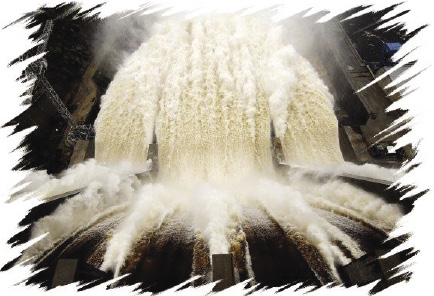 |
Purpose: Development of advanced water management systems
To stabilize Central Asia and reduce frictions in the area, a regional water management system can be formed within five to seven years. The project’s main elements are a comprehensive water-monitoring map, arrangements for mutual water and energy offsets among the countries of the region, oversight of new HPP in Kyrgyzstan and Tajikistan to preclude damage to other economies, and programs to improve the efficiency of water utilization in Uzbekistan’s agriculture, which consumes a disproportionate amount of water,7 as well as in Kyrgyzstan and Tajikistan.
Central Asia Silkworm-Breeding Cluster
 |
Purpose: Organize a silkworm-breeding cluster in Central Asia, revive traditional silk-making, and create “Silk from Central Asia” as a world-famous brand
Tajikistan and Uzbekistan formerly were world leaders in silk production, a 4.5 thousand-year-old craft, with techniques passed down over the generations. Today, few master silk-makers remain, and production does not meet even domestic demand, but the Tajiktextilmash textile machinery plant and others can be modernized and geared up. The Namagan and Fergana Regions of Uzbekistan and Tajikistan’s Sughd Region are ideally suited for expanded production, modernization of processing techniques, and training new specialists. Job-creation in the Fergana Valley is important for Kyrgyzstan, Tajikistan, and Uzbekistan.
Vitamin Bridge
 |
Purpose: Central Asian fruit production to supply the Russian market
Size: $5 billion, to build 280 food-processing plants in Central Asia and Russia
Russia consumes 7 million metric tons of fruit annually, only half the recommended level. Central Asian fruit is available only seasonally, while lower-quality produce from far overseas predominates. Expanded fruit production for supplying high-vitamin produce to the Russian market year-round will create jobs in Central Asia, as well as orders for equipment and technology from Russian producers. New growing and processing technologies preserve high vitamin levels.
Eurasian Bank of Industrial Silver
Purpose: Develop silver mines in Central Asia to build up a 25,000-ton reserve of industrial silver, which may also serve as collateral for large development credits
Size: $4 billion
Dashtijum Hydroelectric Dam
 |
Purpose: Hydroelectric power for agriculture and industry
Size: $5 billion
The Dashtijum HPP on the Panj River, which forms the Tajikistan-Afghanistan border, will provide 1.5 million cubic km of water annually for irrigation and create 6 million jobs in agriculture and industry in Afghanistan. The project depends on international cooperation and joint international financing by Russia, China, Tajikistan, Afghanistan, and Pakistan. It implies the development of northern Afghanistan, where the power generated will be consumed.
Purpose: Produce new types of farm machinery and urban maintenance vehicles
Size: $10 million
A heavy equipment assembly plant in the Panj Free Zone, Tajikistan, will produce equipment for Tajikistan and Afghanistan, using designs and parts from Russia’s GAZ automotive complex.
Strategic Pipeline from Russia to Central Asia
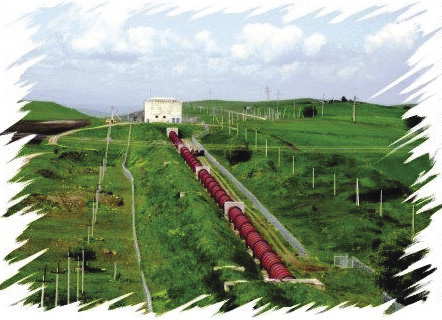 |
Purpose: Import water from Russia for irrigation
Size: $5 billion, 30 cubic km (7.9 trillion gallons) per year
This project is a component of
a future unified Central Asian water and energy management system. A modification of the once-planned Ob-Irtysh River diversion project, it will enable reconstitution of the lower reaches of the Amu Darya and Syr Darya rivers, which flow into the currently desiccated Aral Sea, while allowing hydroelectric power development in the mountainous regions closer to their sources. Iran and Turkmenistan are candidates to supply wide-diameter pipe.
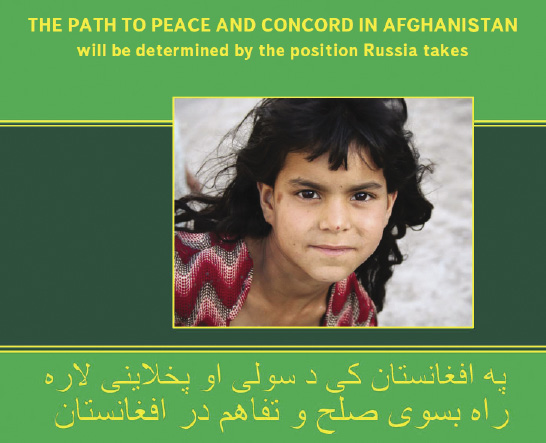 |
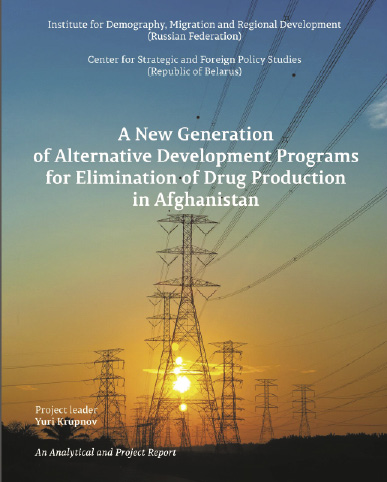 |
|
Publications of the Institute for Demography, Migration and Regional Development (IDMRD), related to the economic development of Afghanistan, include “The Path to Peace and Concord in Afghanistan Will Be Determined by the Position Russia Takes” (2008), “How the South of Western Siberia Will Become an Economic Center of the Planet” (2012, in Russian only), and “A New Generation of Alternative Development Programs for the Elimination of Drug Production in Afghanistan” (2014). |
||
Footnotes:
1. Rachel Douglas, “After Ukraine’s EU Refusal: Eurasian Development vs. Collapse and Chaos,” EIR, Dec. 6, 2013.
2. Douglas, “U.S. Sanctions Don’t Stop Russian Anti-Drug Proposal,” EIR, April 4, 2014.
3. The authors refer inclusively to Soviet cooperation with the post-1973 Mohammed Daud Khan regime, not only the period after the Soviet invasion in late 1979.
4. Most of Tajikistan’s existing HPP are on the Vakhsh River, which arises in Kyrgyzstan, flows through north-central Tajikistan, and joins the Amu Darya River. The Panj River is another tributary of the Amu Darya. In view of the serious damage to the Amu Darya and the Aral Sea, particularly from cotton monoculture in Uzbekistan in the Soviet period, IDMRD programs call for cooperative water and energy programs and planning in the region. Since 2013, Kazakhstan has been promoting the formation of a Central Asia regional water committee, under the auspices of the Shanghai Cooperation Organization, to address water needs and resolve conflicts.
The Dashtijum HPP is in the advanced design stage, with organizations in both Russia and India expressing interest in the project. A 2011 summary, “Tajikistan’s Hydro Power Potential,” including some of the projects mentioned here, is available on the UNECE website www.unece.org.
5. IDMRD monetary estimates are included not as a blueprint for financing, but to indicate the scope of development intended.
6. An English overview of the string-rail design is available on the website of its developer, Anatoli Yunitsky, www.yunitskiy.com.
7. A major cause of the drying up of the Amu Darya and Syr Darya rivers, and the Aral Sea, is the decades-long practice of cotton monoculture in Uzbekistan’s economy.

